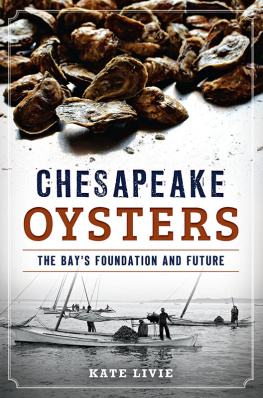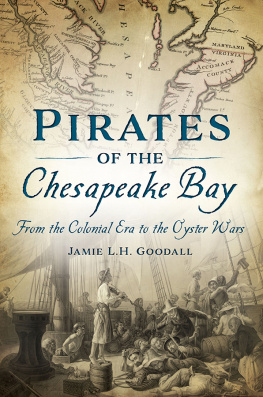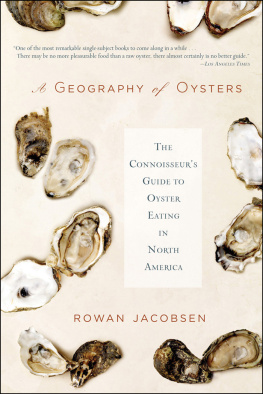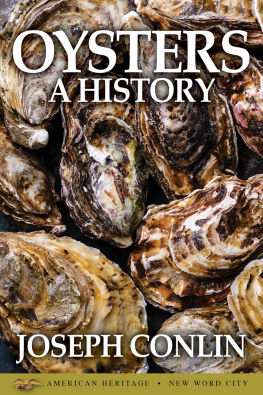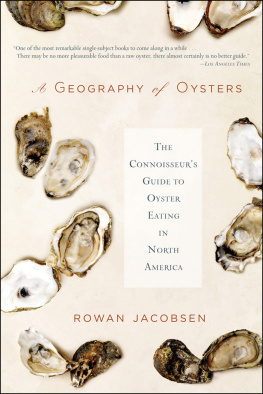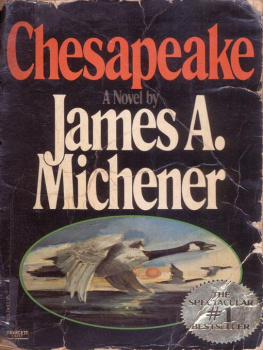Kate Livie - Chesapeake Oysters
Here you can read online Kate Livie - Chesapeake Oysters full text of the book (entire story) in english for free. Download pdf and epub, get meaning, cover and reviews about this ebook. year: 2015, publisher: Arcadia Publishing Inc., genre: Home and family. Description of the work, (preface) as well as reviews are available. Best literature library LitArk.com created for fans of good reading and offers a wide selection of genres:
Romance novel
Science fiction
Adventure
Detective
Science
History
Home and family
Prose
Art
Politics
Computer
Non-fiction
Religion
Business
Children
Humor
Choose a favorite category and find really read worthwhile books. Enjoy immersion in the world of imagination, feel the emotions of the characters or learn something new for yourself, make an fascinating discovery.
- Book:Chesapeake Oysters
- Author:
- Publisher:Arcadia Publishing Inc.
- Genre:
- Year:2015
- Rating:4 / 5
- Favourites:Add to favourites
- Your mark:
- 80
- 1
- 2
- 3
- 4
- 5
Chesapeake Oysters: summary, description and annotation
We offer to read an annotation, description, summary or preface (depends on what the author of the book "Chesapeake Oysters" wrote himself). If you haven't found the necessary information about the book — write in the comments, we will try to find it.
Chesapeake Oysters — read online for free the complete book (whole text) full work
Below is the text of the book, divided by pages. System saving the place of the last page read, allows you to conveniently read the book "Chesapeake Oysters" online for free, without having to search again every time where you left off. Put a bookmark, and you can go to the page where you finished reading at any time.
Font size:
Interval:
Bookmark:

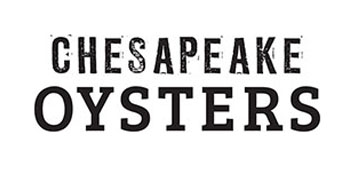

Published by American Palate
A Division of The History Press
Charleston, SC
www.historypress.net
Copyright 2015 by Kate Livie
All rights reserved
First published 2015
e-book edition 2015
ISBN 978.1.62585.392.9
Library of Congress Control Number: 2015947043
print edition ISBN 978.1.62619.825.8
Notice: The information in this book is true and complete to the best of our knowledge. It is offered without guarantee on the part of the author or The History Press. The author and The History Press disclaim all liability in connection with the use of this book.
All rights reserved. No part of this book may be reproduced or transmitted in any form whatsoever without prior written permission from the publisher except in the case of brief quotations embodied in critical articles and reviews.
To Benjamin Ford and Meghan Livie: every word of this book was possible because of your love, support, patience and inspiration. I can never thank you enough, for everything.
And to the memory of Scott Livie, who gave me my first oyster, and shared his love of the Chesapeake Bay with me. I love you, Dad. You were with me all along the way.

The largest genuine Maryland oysterthe veritable bivalve of the Chesapeake...is as large as your open hand. A magnificent, matchless reptile! Hard to swallow? Dangerous? Perhaps to the novice, the dastard. But to the veteran of the raw bar, the man of trained and lusty esophagus, a thing of prolonged and kaleidoscopic flavors, a slow sipping saturnalia, a delirium of joy!
H.L. Mencken, 1913
CONTENTS
INTRODUCTION

He was a bold man, asserted Jonathan Swift, who first ate an oyster. Swift was rightoysters are unlikely additions to our culinary customs. Fortressed in their thick shells, more closely resembling rubble than food, its a wonder they were ever considered worth eating. And thats just the oysters exterior. Once shucked, an oyster presents an organic pool of soft folds and metallic brine that has been described in terms from ribald to repulsive. Yet oysters have persevered, despite their off-putting appearance. Plucked from the water and savagely eaten while still alive, they connect us with our dormant barbarism, echoes of our Neolithic ancestors who gathered them at the waters edge.
Oysters are unbeautiful organisms, yet their taste is so compelling that they have shaped the architecture of our Chesapeake Bay environment and culture for eons. Here in the Bays tidewater, oystersa symbol of the opportunity for survival, for prosperity, for environmental harmony and for innovationcontinue to be one of the Bays most significant and enduring connections between our past and our present.
From the beginning, oysters have represented a central component of the Chesapeake diet. Chesapeake Paleo-Indians, in particular, consumed them in quantities so impressive that imprints of their ancient oyster feasts remain visible in the modern landscape. Theyre called middensancient trash pits of discarded shell layered over millennia like the ultimate Smith Island cake. You can spot them crumbling where the waves lap at the shore, exposing piles of wafer-thin shell with every low tide. As winter set in, the Bays native people traveled to winter camps close to the immense oyster reefs that would sustain them over the cold, dark months. Generations of Indian communities partook of the bounty, eating thousands of oysters a season. Today, these fragile middens are reminders of the long, intertwined history of Chesapeake people and oystersremaining after most of the oyster reefs and native tribes have disappeared.
When British colonists immigrated to the Chesapeake in the seventeenth century, they were astonished by the abundance of oysters. Their diaries and letters are full of breathlessly enraptured descriptions of the Chesapeakes bounty. Oysters there be in whole banks and beds, and those of the best. I have seen some thirteen inches long, wrote William Strachey in 1612. Coming from a land where the populace had embraced oysters as a national birthright since the time of the Romans, oysters were a colonial comfort food. In the wilderness of the New World, oystersdislodged by hand and eaten raw with gustowere a survival strategy.
In the several hundred years following colonization, Chesapeake residents continued to rely on the oyster reefs. Recipes from this era call for adding oysters and their liquor to a dish, cooking them until the oysters delicate taste had been transferred and then spooning up the oysters and throwing them away. It was an embarrassment of richesso seemingly endless was the oyster population in size and scope that it was inconceivable to the eighteenth-century Chesapeake person that humans could possibly make a dent. Oysters were so plentiful as to be disposable, so ubiquitous as to be invisible. Everyone ate them, regardless of social class, income or race.
The centrality of oysters to Bay life only grew in the nineteenth century. Due to the rapid technological advances of the Industrial Eraincluding steam locomotion, canning and food preservation and the newfangled practice of dredgingthe slow, local harvest of oysters transformed almost overnight into an international juggernaut. Skipjacks sailed over the winter Bay, their decks piled high with the white gold from the bottom beds. Railroad towns like Crisfield sprang up virtually overnight on the shores of the Chesapeake, oriented toward their lifeblood, their enginethe fertile oyster reefs. From the African American women who shucked oysters in the unheated packinghouses to the powerful railroad magnates who flooded their rail lines with boxcars laden with oyster cargo, all strata of society felt the impact of the oyster boom.
For fifty years in the late 1800s to the turn of the century, there was no respite for the Bays oysters. The peak of the oystering harvest was in the 1880s, when over 20 million bushels of oysters were caught each year. Even the oysters shells were in such demand that the ancient middens along the Bays shores were unearthed for use in lime and fertilizer.
It wasnt to last. Year by year, the oyster catch once believed to be in numbers beyond the reach of human impact dwindled. Below the water line, the reefs were now relegated to strips of productive oyster beds. By 1920, only 4 million oysters were harvested. A lower but steady harvest prevailed until the 1960s, when two virulent diseases, MSX and Dermo, devastated the remaining population and laid waste to the already-struggling wild oyster industry. Although scientific innovation has introduced a lab-created oyster capable of resisting the diseases, its potential is still being realized on newly formed oyster farms around the watershed. For wild oysters, the future is less certain. Today, the harvest hovers around 500,000 bushels or fewer of wild-caught oysters a yeara pale shadow of the oyster booms halcyon days.
Oysters have always equaled opportunity in the Chesapeake. As we approach a watershed moment in their harvest, they now represent the possibility for change, for dialogue and for balance. Once valued only for their flavor, oysters are now championed by conservation organizations as one of the Bays founding fish. Oysters are touted as an environmental panaceacreating habitat, supporting the food chain and filtering the Chesapeakes formidable concentrations of sediment and algae. Watermen, too, champion oysters as one of the last Chesapeake prospects for a traditional fishing economy. For many, oysters still represent a Chesapeake where a man with a boat, a dredge and a mission can make a living for an honest days work with his own two hands.
Next pageFont size:
Interval:
Bookmark:
Similar books «Chesapeake Oysters»
Look at similar books to Chesapeake Oysters. We have selected literature similar in name and meaning in the hope of providing readers with more options to find new, interesting, not yet read works.
Discussion, reviews of the book Chesapeake Oysters and just readers' own opinions. Leave your comments, write what you think about the work, its meaning or the main characters. Specify what exactly you liked and what you didn't like, and why you think so.

